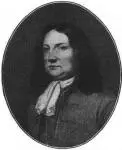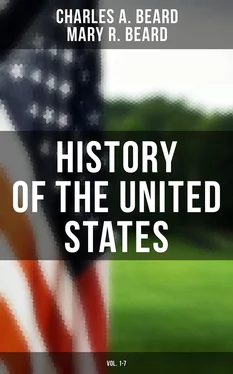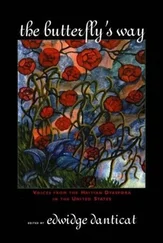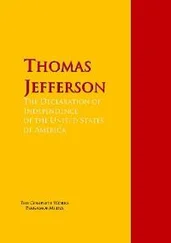
Three other colonies, all of which retained their identity until the eve of the American Revolution, likewise sprang directly from the congregations of the faithful: Rhode Island, Connecticut, and New Hampshire, mainly offshoots from Massachusetts. They were founded by small bodies of men and women, "united in solemn covenants with the Lord," who planted their settlements in the wilderness. Not until many a year after Roger Williams and Anne Hutchinson conducted their followers to the Narragansett country was Rhode Island granted a charter of incorporation (1663) by the crown. Not until long after the congregation of Thomas Hooker from Newtown blazed the way into the Connecticut River Valley did the king of England give Connecticut a charter of its own (1662) and a place among the colonies. Half a century elapsed before the towns laid out beyond the Merrimac River by emigrants from Massachusetts were formed into the royal province of New Hampshire in 1679.
Even when Connecticut was chartered, the parchment and sealing wax of the royal lawyers did but confirm rights and habits of self-government and obedience to law previously established by the congregations. The towns of Hartford, Windsor, and Wethersfield had long lived happily under their "Fundamental Orders" drawn up by themselves in 1639; so had the settlers dwelt peacefully at New Haven under their "Fundamental Articles" drafted in the same year. The pioneers on the Connecticut shore had no difficulty in agreeing that "the Scriptures do hold forth a perfect rule for the direction and government of all men."
The Proprietor.—A third and very important colonial agency was the proprietor, or proprietary. As the name, associated with the word "property," implies, the proprietor was a person to whom the king granted property in lands in North America to have, hold, use, and enjoy for his own benefit and profit, with the right to hand the estate down to his heirs in perpetual succession. The proprietor was a rich and powerful person, prepared to furnish or secure the capital, collect the ships, supply the stores, and assemble the settlers necessary to found and sustain a plantation beyond the seas. Sometimes the proprietor worked alone. Sometimes two or more were associated like partners in the common undertaking.

William Penn,
Proprietor of Pennsylvania
Five colonies, Maryland, Pennsylvania, New Jersey, and the Carolinas, owe their formal origins, though not always their first settlements, nor in most cases their prosperity, to the proprietary system. Maryland, established in 1634 under a Catholic nobleman, Lord Baltimore, and blessed with religious toleration by the act of 1649, flourished under the mild rule of proprietors until it became a state in the American union. New Jersey, beginning its career under two proprietors, Berkeley and Carteret, in 1664, passed under the direct government of the crown in 1702. Pennsylvania was, in a very large measure, the product of the generous spirit and tireless labors of its first proprietor, the leader of the Friends, William Penn, to whom it was granted in 1681 and in whose family it remained until 1776. The two Carolinas were first organized as one colony in 1663 under the government and patronage of eight proprietors, including Lord Clarendon; but after more than half a century both became royal provinces governed by the king.
The English.—In leadership and origin the thirteen colonies, except New York and Delaware, were English. During the early days of all, save these two, the main, if not the sole, current of immigration was from England. The colonists came from every walk of life. They were men, women, and children of "all sorts and conditions." The major portion were yeomen, or small land owners, farm laborers, and artisans. With them were merchants and gentlemen who brought their stocks of goods or their fortunes to the New World. Scholars came from Oxford and Cambridge to preach the gospel or to teach. Now and then the son of an English nobleman left his baronial hall behind and cast his lot with America. The people represented every religious faith—members of the Established Church of England; Puritans who had labored to reform that church; Separatists, Baptists, and Friends, who had left it altogether; and Catholics, who clung to the religion of their fathers.
New England was almost purely English. During the years between 1629 and 1640, the period of arbitrary Stuart government, about twenty thousand Puritans emigrated to America, settling in the colonies of the far North. Although minor additions were made from time to time, the greater portion of the New England people sprang from this original stock. Virginia, too, for a long time drew nearly all her immigrants from England alone. Not until the eve of the Revolution did other nationalities, mainly the Scotch-Irish and Germans, rival the English in numbers.
The populations of later English colonies—the Carolinas, New York, Pennsylvania, and Georgia—while receiving a steady stream of immigration from England, were constantly augmented by wanderers from the older settlements. New York was invaded by Puritans from New England in such numbers as to cause the Anglican clergymen there to lament that "free thinking spreads almost as fast as the Church." North Carolina was first settled toward the northern border by immigrants from Virginia. Some of the North Carolinians, particularly the Quakers, came all the way from New England, tarrying in Virginia only long enough to learn how little they were wanted in that Anglican colony.
The Scotch-Irish.—Next to the English in numbers and influence were the Scotch-Irish, Presbyterians in belief, English in tongue. Both religious and economic reasons sent them across the sea. Their Scotch ancestors, in the days of Cromwell, had settled in the north of Ireland whence the native Irish had been driven by the conqueror's sword. There the Scotch nourished for many years enjoying in peace their own form of religion and growing prosperous in the manufacture of fine linen and woolen cloth. Then the blow fell. Toward the end of the seventeenth century their religious worship was put under the ban and the export of their cloth was forbidden by the English Parliament. Within two decades twenty thousand Scotch-Irish left Ulster alone, for America; and all during the eighteenth century the migration continued to be heavy. Although no exact record was kept, it is reckoned that the Scotch-Irish and the Scotch who came directly from Scotland, composed one-sixth of the entire American population on the eve of the Revolution.

Settlements of German and
Scotch-Irish Immigrants
These newcomers in America made their homes chiefly in New Jersey, Pennsylvania, Maryland, Virginia, and the Carolinas. Coming late upon the scene, they found much of the land immediately upon the seaboard already taken up. For this reason most of them became frontier people settling the interior and upland regions. There they cleared the land, laid out their small farms, and worked as "sturdy yeomen on the soil," hardy, industrious, and independent in spirit, sharing neither the luxuries of the rich planters nor the easy life of the leisurely merchants. To their agriculture they added woolen and linen manufactures, which, flourishing in the supple fingers of their tireless women, made heavy inroads upon the trade of the English merchants in the colonies. Of their labors a poet has sung:
Читать дальше















